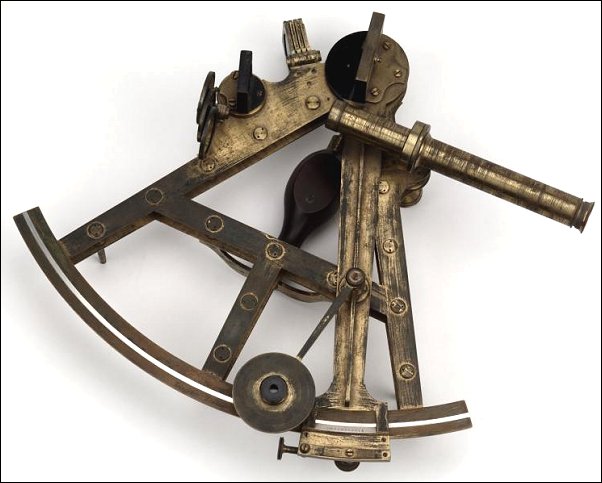To
return to the previous page click the blue arrow at the top right
of this page
or the one at the bottom right.
This
sextant was used to measure the angle of a heavenly body, such as
the sun or a star, above the horizon. The maximum height (zenith)
of heavenly bodies changes depending on how far from the equator
the observation point is. Therefore, fishermen and whalers could
use this measurement to calculate their latitude.
The
sextant is very finely made of brass, with glass fittings. There
are two mirrors: the index mirror is fixed to a sliding arm (the
index). The horizon mirror is half mirrored and half window. There
are also shade glasses for use when looking at bright objects, a
120 degree scale, a magnifier and a telescope.
The
angle was measured by lining up the telescope so that the horizon
could be seen through the window part of the horizon mirror. The
index was moved until the reflected light of the sun or star was
seen in the mirrored half. The height could then be read from the
scale, using the attached magnifier.
The
design for this type of sextant was patented in 1788 by Edward Troughton,
a scientific instrument maker based in London. This brass example
was made around 1820, probably by Troughton.
The
10-inch ‘pillar frame’ sextant has two thin frames of
plate brass held together by a series of brass pillars. It has a
platinum scale (which would not tarnish), an early example of the
recently discovered metal being used in instrument design. The English
chemist, William Hyde Wollaston (1766-1828) managed to isolate platinum
chemically in 1804. Troughton, who had introduced a new method of
engraving sextant scales in 1785, realised that the hardness of
this metal made it ideal for scale engraving.

©SCRAN/National
Museums of Scotland
Sextant, 1820
|